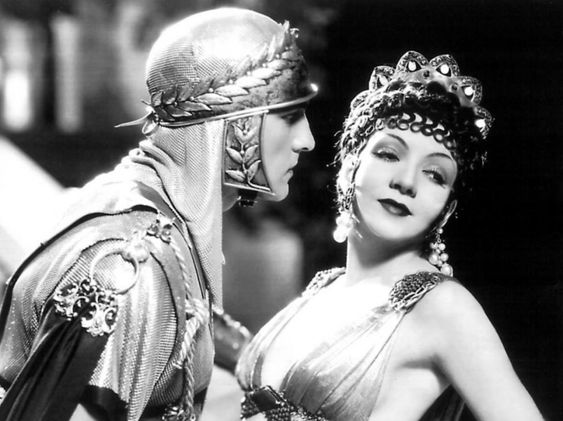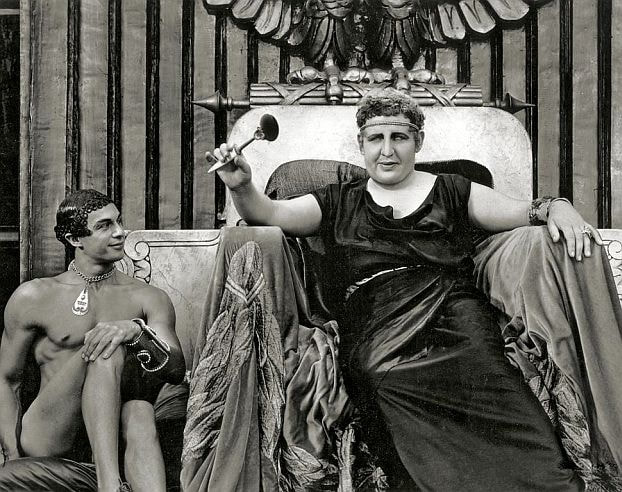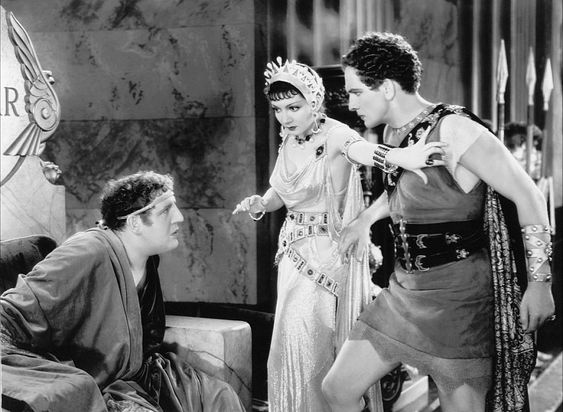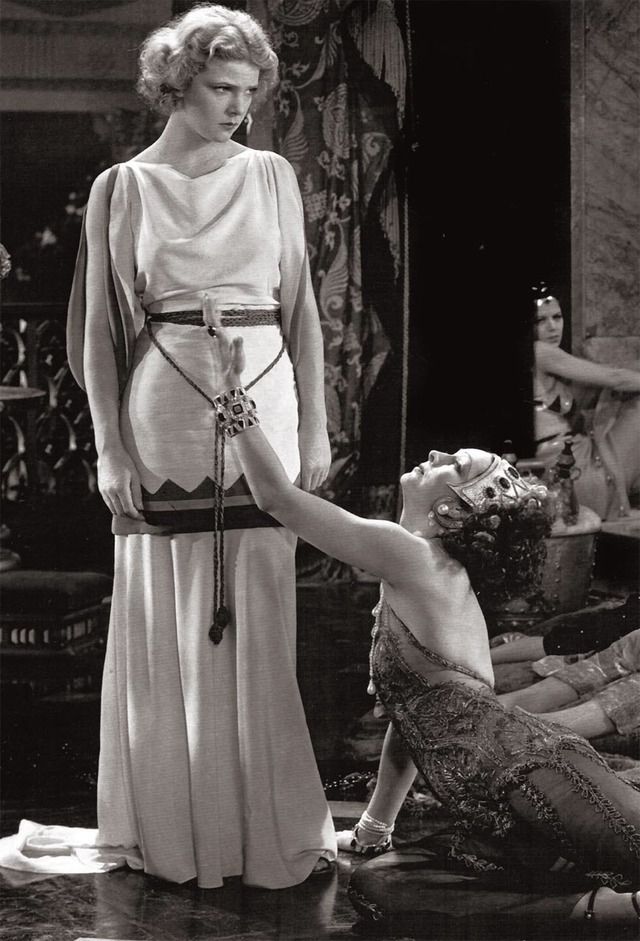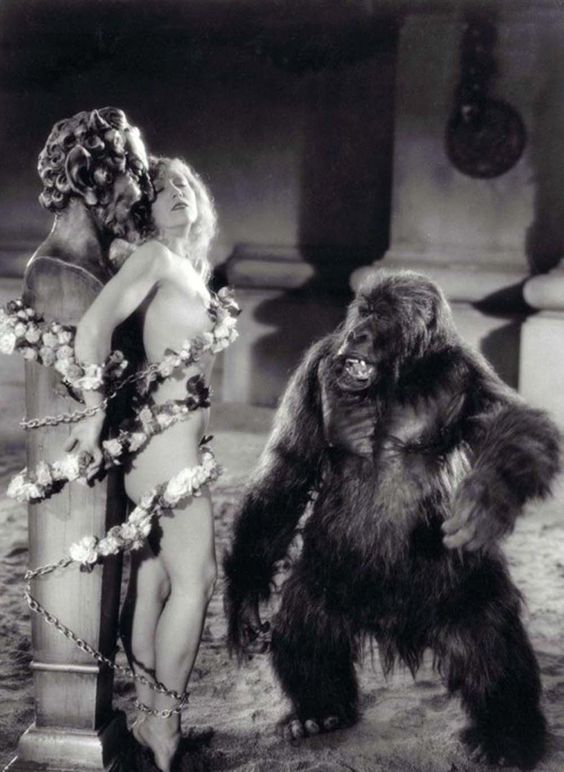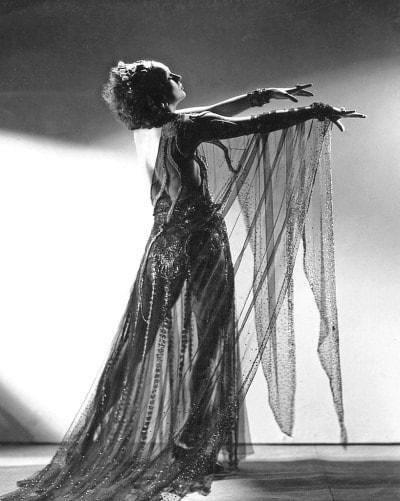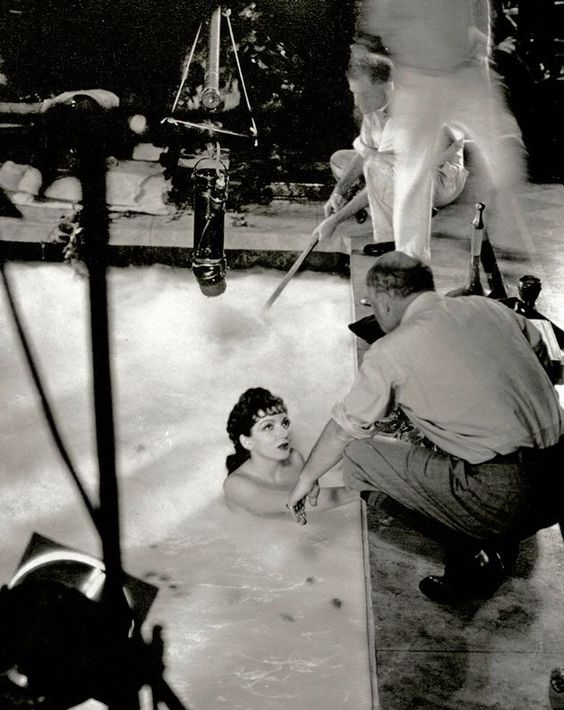The Sign of the CrossDirected by: Cecil B. DeMille
Starring: Claudette Colbert, Fredric March, Charles Laughton, Elissa Landi Studio: Paramount IMDB Rating: 8 Only legendary director Cecil B. DeMille could create a performance that Fredic March would say “She was a hot woman in it-a hot, hot woman! When she worked herself up, she put Monroe, Harlow, Gardner Novak, all of them, in the shade” (Quirk, p. 52). March was describing Claudette Colbert playing Poppaea, Nero’s wife, in DeMille’s classic Pre-Code drama The Sign of the Cross (’32). Her sexy, smart & manipulative turn as the Roman emperor’s wife elevates the sexual tension & helps paint the Roman’s as wonton & lascivious, in stark contract to the Christian purity that DeMille hoped would save the film from censorship. Colbert’s costumes alone could have been enough to turn the tide towards The Production Code’s enforcement (censorship), but it’s the costume Colbert didn’t wear that often gets the most attention when The Sign of the Cross comes up. Her asses milk bath completely naked is a scene for the Pre-Code ages, but the part itself could have played by someone else, if not for DeMille’s steadfast belief in Colbert’s talent & her willingness to play against the nicer, more gentile parts she was known for. In fact, DeMille’s initial offer to Colbert perfectly sums up her character & the performance; asking “how would you like to play the wickedest woman in the world?” Strangely enough, it was DMille who really couldn’t afford to be so cheeky, because he was fighting for his professional life while preparing The Sign of the Cross. |
The studio he had helped found, Paramount, after having dismissed him several years earlier, was in dire financial straits & DeMille was offered the job, only if he covered half of a very small budget & took an even smaller salary. Thankfully, DeMille’s investment in himself & his trust in recasting Colbert’s on-screen personae paid enormous dividends, both initially in the stellar box office returns for Sign of the Cross, and in creating one of the Pre-Code eras most iconic films.
While the film was widely condemned by religious groups, who felt the storyline of Christian suffering in Rome was a mere pretext to show skin, sex & violence, it is often cited as the turning point that led to the enforcement of the Production Code some 2 years later. Costume & set designer Mitchell Leisen went out of his way to create contrasts between the Christians and the Romans; plain & humble for the Christians, lavish & pretentious for the Romans. He wasn’t fooling anyone. Describing the mood of the film as “delicious debauchery,” Leisen made plain his designs for Colbert’s costumes by saying “I slit her skirts right up to the hip to show her marvelous legs. She didn’t have a stich on underneath” (Viera, p. 106).
Aside from Poppaea’s nude swim, 2 additional scenes inflamed the religious groups, the so-called “lesbian dance” and the prolonged exhibition at the coliseum. As was the case with many directors & producers during the Pre-Code Era, DeMille was able to manipulate the reception of both scenes to escape censorship. The Dance of the Naked Moon, performed alluringly by a character described as “the most wicked and talented woman in Rome,” is a perfect example of DeMille skirting censors by both playing on his prestigious reputation, as well as his attention to detail. Citing DeMille’s desire to show the blatant conflict between the Romans & the Christians, while maintaining the utmost period detail in costuming & décor, censors noted that the dance was perfectly suitable under the Code. The dance itself, positioned as the centerpiece or prelude to a Roman orgy, places the chaste Christian maiden, Mercia (Ellsa Landi) at the literal mercy of the seductive Ancaria (Joyzelle Joyner) as she writhes & shimmies against her, at one point “executing a Kootch Movement” that was noted by censors, but allowed to stay in the final print.
Similarly, the prolonged scenes of violence, bestiality, & mayhem that play out at the coliseum were shown largely as shot, with a minor cut for pacing (alligators eating Christians). Scene after scene of gladiatorial combat, including spear impalement, decapitation & gruesome deaths were only outdone by an elephant crushing a man & a gorilla advancing towards a naked & tied up maiden, with obvious mischief in his eyes. The sheer volume of depravity would have been enough to overwhelm censors, let alone the paying audience, but once again DeMille’s stature allowed most of his images to slide through.
Released as it was at the lowest point of the depression, the film was an overwhelming box office smash, in large part because of the outrageous spectacle DeMille & Leisen crafted. It signaled DeMille’s return to glory, Colbert’s ascension to super stardom & put profits in the Paramount coffers, but it also forged a short-term bond between director & star that would last another 2 pictures.
Released as it was at the lowest point of the depression, the film was an overwhelming box office smash, in large part because of the outrageous spectacle DeMille & Leisen crafted. It signaled DeMille’s return to glory, Colbert’s ascension to super stardom & put profits in the Paramount coffers, but it also forged a short-term bond between director & star that would last another 2 pictures.
Sources
Cecil B. DeMille: The Art of the Hollywood Epic. Cecilia DeMille & Mark A. Vieira. Running Press. 2014.
Sin in Soft Focus: Pre-Code Hollywood. Mark A. Vieira. Abrams. 1999.
Claudette Colbert: An Illustrated Biography. Lawrence T. Quirk. Crown Publishers, Inc. 1985.
Empire of Dreams: The Epic Life of Cecil B. DeMille. Scott Eyman. Simon & Schuster. 2010.
Cecil B. DeMille: The Art of the Hollywood Epic. Cecilia DeMille & Mark A. Vieira. Running Press. 2014.
Sin in Soft Focus: Pre-Code Hollywood. Mark A. Vieira. Abrams. 1999.
Claudette Colbert: An Illustrated Biography. Lawrence T. Quirk. Crown Publishers, Inc. 1985.
Empire of Dreams: The Epic Life of Cecil B. DeMille. Scott Eyman. Simon & Schuster. 2010.





